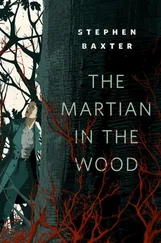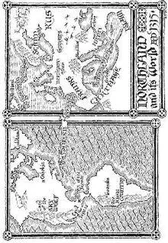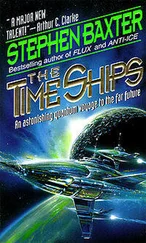Thus the Na’vi. Once, all humans lived as the Na’vi do.
In the long ages before the coming of farming—in Eurasia the period is known as the “Mesolithic,” the Middle Stone Age—everybody on Earth lived as a hunter-gatherer. The makers of Avatar based aspects of their depiction of the Na’vi lifestyle on the lives of hunter-gatherer forest dwellers in South America and Africa.
But surviving hunter-gatherer communities have been pushed to the margins by the spread of farming in prehistoric times, and by empires and colonies later. Today they are only allowed to subsist on land the farmers, loggers and miners can’t use, or haven’t got to yet. Modern examples probably don’t give us an accurate picture of how hunter-gatherers might have lived in the past, on the richest grounds, and before their ecologies and lifestyles were reshaped by contact with the farmers.
In particular, the Omaticaya clan in their Hometree are sedentary; they are based in one place all year round. We think of hunter-gatherers as mobile—nomadic, moving with the herds and the seasons. But there is plenty of evidence from the past that where resources are rich enough hunters would choose to be sedentary, like the Omaticaya. The North American Indians of the Pacific Northwest are an example. Modern hunter-gatherers generally don’t have concepts of “ownership” of the land. Either they are on the move in search of resources, or they live in a land so rich there’s no need for conflict over ownership; there’s enough for everybody. But perhaps the sedentary hunter-gatherers of the past were territorial, as the Omaticaya are, and would have rallied to Jake’s battle-cry of defiance against RDA: “This is our land!”
Similarly, modern hunter-gatherer groups typically don’t have hereditary leaderships or rigid social hierarchies, and here again the Omaticaya, led by a named individual in clan leader Eytukan with a named heir in Tsu’tey, seem to be atypical. More usually “leaders” would be selected on the basis of skill or prestige for specific purposes, such as leading a hunt—rather as when Jake as Toruk Macto , “rider of the last shadow,” assumes the mantle of leader specifically for the fight against the SecOps forces. But again, we do know that stratified social hierarchies could arise among the sedentary hunter-gatherers of the past, and maybe in the Na’vi in that respect too are true to the past on Earth.
What about war? There’s clearly evidence of warfare among the Na’vi. The young male Tsu’tey defines himself as a warrior, and the clans come together willingly to face the external threat of SecOps. Large-scale warfare is thought to have been rare among hunter-gatherers because population densities were too low to support large armies; conflict was smaller-scale, ritualistic.
Among the Na’vi, the Earth explorers learn that warfare is rare unless brought about by external stresses—population displacements because of some natural disaster like a volcano, perhaps. Fighting tends to be fierce but brief, followed by intense efforts to resolve the conflict. Na’vi wars don’t lead to the elimination of whole peoples, as ours do. However, the Na’vi’s past must contain many stories we haven’t yet been told.
As with the Na’vi, human hunter-gatherers generally don’t see themselves as separate from the natural world which sustains them. The Na’vi even sleep cradled by nature. In the womb of their Hometree, the Omaticaya sleep in “hammocks” that are actually living plants. And the Na’vi know their world intimately, as we see onscreen when Neytiri hunts with Jake. In pursuit of their prey Neytiri is able to detect the subtlest clues: trails, tracks near the waterholes, the smallest scents and sounds.
Hunters rely entirely on the bounty of nature to sustain them, and they know it. They are bound into natural cycles of life and death. They will often pay their respects to the animals they have to hunt for meat, just as we see among the Na’vi when Jake, completing his initiation hunt, brings down a hexapede in a “clean kill,” and thanks it for the gift of its body to the people, while its spirit goes with the Great Mother Eywa. This applies to the life and death of people too. The Na’vi believe that spirits are endlessly recycled through Eywa; nothing is lost—and for the Na’vi, this is literally true (see Chapter 29on Eywa).
Hunters’ mythologies, whose purpose is to establish relationships between humans, nature and the gods, reflect this perception of unity. Hunters may see spirits in the animals and plants, and in the physical structure of the world, in rocks and sky and rain. Myths of creation and the nature of the world are diverse. In North America, however, some types of creation myths are common, with a “Great Spirit” lying behind all creation, like the Gitchi Manitou of the Algonquians, though more definite and active figures are often imagined, like the widespread Mother Earth and Father Sky.
So Eywa the Great Mother is not an uncommon archetype, although, as Grace Augustine learns, Eywa actually has a biological basis. Otherwise Na’vi religion contains elements of many forms of religion on Earth, from monotheism, worship of one true god, to animism, the idea that the gods are immanent in every aspect of the world.
Mo’at, mother of Neytiri, wife of Eytukan, clan matriarch, is tsahik—“ like a shaman,” Grace Augustine says. A shaman is a pivotal figure spiritually, able to mediate between the spirit world and the human world, perhaps through trances, dream states or narcotics. This is the role we see Mo’at play in the scenes in the Tree of Souls as she tries to shepherd the spirits of Grace and Jake out of their bodies. In Mo’at’s case there is a physical, observable link between herself and Eywa, but her shamanism is a reflection of widespread religious practices on Earth.
Among the Na’vi, as among similar human groups, there is no clear distinction between religious practices and those of everyday life; they don’t save it all up for Sundays. Initiation rites are common on Earth, doubling as training, testing and indoctrination programmes for the young, and ceremonies to mark the movement from one stage of life to the next—and they are often just as dangerous as those Jake endures to gain acceptance with the Omaticaya, like the Iknimaya , his “stairway to heaven” climb in pursuit of the banshee.
Just as the Na’vi see themselves as bound into nature, so they are bound into their communities. The Na’vi are intensely social. We can see from the evidence of Neytiri’s family that they are monogamous, and that they are close to their children. They eat communally, in one great hall, gathered around a central fire as many human communities would. There doesn’t seem to be much privacy in Hometree, but that’s like dwellings in our own past, even Iron Age roundhouses. And when Jake is accepted into the Omaticaya they touch each other in a web of physical contact that includes the whole clan, and Jake, its newest member. Their wider sociability may be a by-product of their neural linking with each other and with Eywa (see Chapter 29).
Na’vi seem to have few children, compared to most human hunter-gatherer groups which are typically afflicted by high child mortality and a low life expectancy. Perhaps Na’vi children have a better chance in their world than human children do in ours. This would certainly change the demographic mix and the social dynamic of a clan.
So the Na’vi are expert hunters, bound in to nature, intimately social—and, clearly, highly intelligent.
The Na’vi’s intellect is clearly expressed in the art of their artefacts and decorations, such as body paint and clothing. We even glimpse pieces of Na’vi art hanging on the walls of the Hell’s Gate base. The Omaticaya clan particularly pride themselves on their brilliant textiles. Their largest loom, called the mas’kit nivi sa’nok , “mother loom,” has pride of place in Hometree.
Читать дальше










